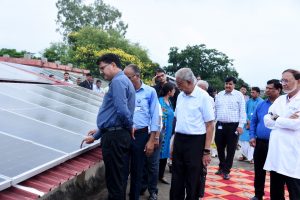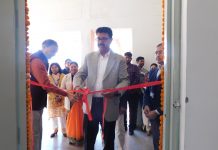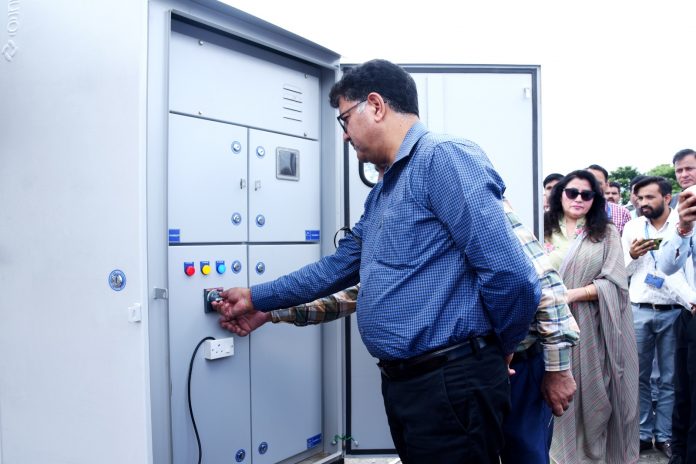Dateline Dehradun: Swami Rama Himalayan University (SRHU) Jollygrant has set yet another example in the field of energy conservation. A new 1000 kW rooftop solar plant has been installed, with the formal inauguration by Chairman Dr. Vijay Dhasmana. With this, the university’s total rooftop solar plant capacity has increased to 2500 kW.
According to a report, global carbon dioxide emissions are nearing pre-pandemic levels. SRHU Chairman Dr. Vijay Dhasmana said the main reason for this is the massive increase in electricity consumption in large institutions. Solar energy is the best option to reduce electricity consumption, as the sun has always been the most reliable source of energy.
First Step Taken in 2007
Dr. Dhasmana explained that the institution understands the importance of solar energy. A committee of experts was formed within the institute. In 2007, recognizing future needs, the first step toward energy conservation was taken. Solar water heater panels were installed in the Himalayan Hospital, Cancer Research Institute, and all the hostels.

First 500 kW Rooftop Solar Panel Installed in 2017
Dr. Dhasmana further mentioned that in 2017, the decision was made to join the National Solar Mission. Considering the 70% subsidy provided by the government for rooftop solar energy production in Himalayan states, the decision to install solar panels was made. A 500 kW rooftop solar panel was installed in the Nursing and Medical College.
82,19,330 kW (Units) of Electricity Saved
Dr. Dhasmana shared that since 2017, 2500 kW of solar panels have been installed on the rooftops of various buildings across the university campus. As a result, SRHU has saved 82,19,330 kW (units) of electricity so far.
Reduction of Approximately 5660 Tons of Carbon Emissions
Dr. Dhasmana added that the dangers of global warming are becoming evident, with carbon emissions being a major contributor. With the help of the 2500 kW rooftop solar panels, SRHU has reduced carbon emissions by 5660 tons, which is a record compared to any other institution in Uttarakhand.
16% of Electricity Needs Met by Solar Energy
Girish Uniyal, head of the Electrical and Mechanical Engineering Department, mentioned that the institution has installed a 3500 kW power plant to meet its energy demands. Over the past three years, 16% of the institution’s electricity demand has been met by solar power.
Water Supply to Remote Villages via Solar Energy
Dr. Dhasmana shared that solar energy has also been used to supply water to remote villages in the mountains. In Churedhar village of Chamba, Tehri, water has been supplied to the village using a solar pumping plant.
CII conferred ‘Green Practices Award’
Dr. Dhasmana noted that for all these achievements, the Confederation of Indian Industry (CII) recently awarded the university the ‘Gold Award’ in the service category of ‘Green Practices’. The university has the distinction of being the first and only institution in North India to receive this honor in this category.

























































